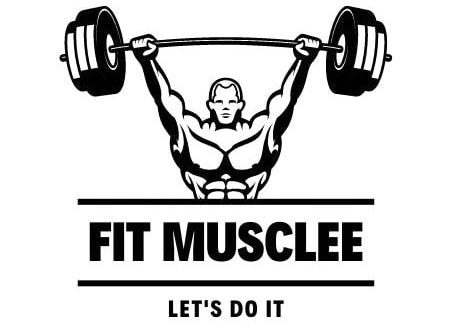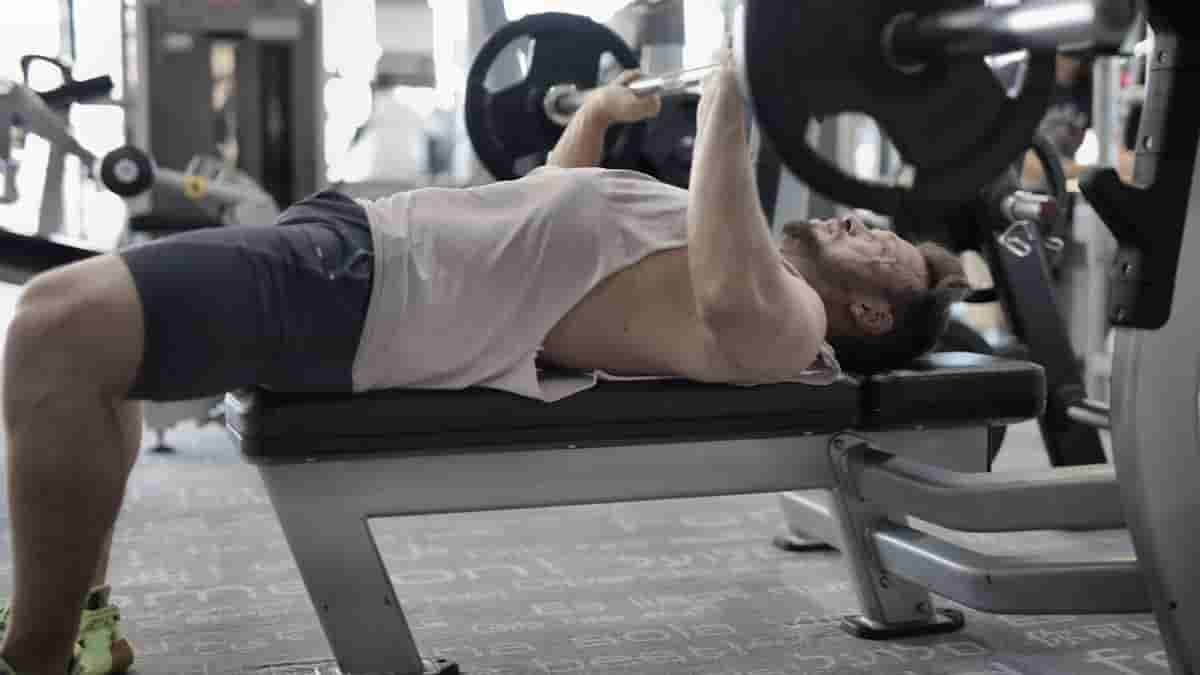Here is your complete guide to compound chest exercises.
Introduction to Compound Chest Exercises
What are the best compound chest exercises? Discovering compound chest exercises opens up a world of possibilities for building impressive upper bodies while enhancing overall fitness. These movements engage multiple muscle groups simultaneously, leading to increased strength, improved posture, reduced injury risks, and enhanced athletic performance. This article delves into the intricate details of these powerful moves, providing valuable insights and tips to elevate your chest training game.
Anatomy of the Chest Muscles
The chest consists primarily of two main muscles – the pectoralis major and pectoralis minor. The former is further divided into three sections: the clavicular head, sternal head, and abdominal head. Understanding their functions helps us tailor our exercise choices accordingly. For instance, the clavicular head contributes significantly to lifting actions like push-ups, whereas the sternal head plays a crucial role in pressing motions such as bench presses.
Top 10 Compound Chest Exercises
Bench Press
Benefits:
- Strengthens all parts of the chest, shoulders, triceps, and core.
- Performing a barbell or dumbbell bench press targets the entire chest region, including both heads of the pectoralis major. It’s essential to maintain proper form by keeping the wrists straight, elbows tucked, and feet flat on the floor.
Barbell Bench Press Form
| Variation | Description |
|---|---|
| Flat | Standard bench press position |
| Incline | Angled bench backrest |
| Decline | Reverse angled bench backrest |
Incline Bench Press
Benefits:
- Emphasizes the upper chest area.
- Incorporating incline bench presses into your routine allows you to target the clavicular head of the pectoralis major, which is responsible for shoulder flexion and adduction.
- Incline Bench Press Form
Decline Bench Press
Benefits:
- Focuses on the lower chest area.
- Decline bench presses are ideal for strengthening the sternal head of the pectoralis major, helping to develop the lower portion of the chest.
- Decline Bench Press Form
Dumbbell Bench Press
Benefits:
- Allows for greater range of motion and better activation of stabilizer muscles.
- Dumbbells provide a versatile alternative to barbells during bench presses, offering a wider range of motion and improved engagement of smaller supporting muscles.
- Dumbbell Bench Press Form
Push-Ups
Benefits:
- A full-body movement that engages the chest, shoulders, arms, and core.
- Push-ups are a staple exercise for developing functional strength and stability throughout the entire upper body.
- Push-Up Form
Dips
Benefits:
Targets the chest, shoulders, and triceps.Dips are another effective compound exercise that works several areas of the upper body, particularly the anterior deltoids and triceps brachii.Dip Form
Cable Crossover
Benefits:
- Provides constant tension on the chest muscles throughout the entire range of motion.
- Cable crossovers offer a unique challenge to the chest muscles due to the continuous resistance provided by cable machines.
- Cable Crossover Form
Chest Fly
Benefits:
- Isolates the chest muscles and provides a stretch at the end of the movement.
- Chest flies focus solely on the pectoralis major, allowing for targeted development of the chest muscles.
- Chest Fly Form
Close-Grip Bench Press
Benefits:
- Emphasizes the triceps and inner chest muscles.
- Close-grip bench presses place extra emphasis on the triceps and the medial portion of the pectoralis major.
- Close Grip Bench Press Form
Overhead Press
Benefits:
* Engages the shoulders, triceps, and chest muscles.
- Overhead presses allow for the simultaneous development of the shoulders, triceps, and anterior deltoids.
- Overhead Press Form
Top Compound Chest Exercises Summary
| Exercise | Benefits |
|---|---|
| Bench Press | Strengthens chest, shoulders, triceps, core |
| Incline Bench Press | Emphasizes upper chest area |
| Decline Bench Press | Focuses on lower chest area |
| Dumbbell Bench Press | Greater range of motion, stabilizer muscles |
| Push-Ups | Full-body engagement |
| Dips | Targets chest, shoulders, triceps |
| Cable Crossover | Constant tension on chest muscles |
| Chest Fly | Isolates chest muscles, provides stretch |
| Close-Grip Bench Press | Emphasizes triceps, inner chest muscles |
| Overhead Press | Engages shoulders, triceps, chest muscles |
Sample Compound Chest Workout Routine
Here’s a sample compound chest workout routine to get you started:
- Warm-up: 5-10 minutes of dynamic stretches and light cardio.
- Main Exercises: Perform 3-4 sets of bench press, incline bench press, and dips, aiming for 8-12 reps per set.
- Supplementary Exercises: Add 2-3 sets of dumbbell chest press, cable chest press, and chest flyes, targeting different angles of the chest.
- Cool-down: Finish with 5-10 minutes of static stretches focusing on the chest and shoulders.
Technique and Form
Proper technique is crucial for maximizing the effectiveness of compound chest exercises. Here are some key points to keep in mind:
- Body Positioning: Maintain a stable and balanced position throughout the movement.
- Range of Motion: Focus on full range of motion to fully engage the chest muscles.
- Breathing: Inhale during the eccentric phase and exhale during the concentric phase of each exercise.
- Common Mistakes: Avoid arching your back, flaring your elbows, or using momentum to lift weights.
- Safety Precautions: Start with lighter weights to perfect your form and gradually increase as you become more proficient.
How to Perform Compound Chest Exercises
Proper form and technique are vital when performing compound chest exercises to minimize the risk of injury and maximize gains. Follow these guidelines to ensure optimal execution:
- Keep your wrists straight and elbows tucked during bench presses.
- Squeeze your glutes and brace your abs before initiating any lift.
- Avoid arching your back excessively during decline bench presses.
- Use a controlled tempo for each repetition.
- Don’t lock out your joints between reps.
Progression and Variation
To continue making gains, it’s essential to progressively overload your muscles and vary your compound chest exercises. Here are some strategies to consider:
- Increase the weight gradually as you get stronger.
- Experiment with different grip positions and angles to target various areas of the chest.
- Incorporate advanced techniques such as drop sets, supersets, and pyramids to keep your workouts challenging.
Benefits of Compound Chest Exercises
- Increase muscle mass and strength
- Improve posture and balance
- Decrease injury risk
- Boost athletic performance
Nutrition for Chest Muscle Growth
Optimal nutrition is essential for supporting muscle growth and recovery. Here are some nutrition tips for maximizing your chest gains:
- Protein Intake: Consume an adequate amount of protein to support muscle repair and growth. Aim for 1.2-2.0 grams of protein per kilogram of body weight per day.
- Balanced Diet: Ensure your diet is rich in whole foods, including lean proteins, complex carbohydrates, healthy fats, fruits, and vegetables.
- Pre and Post-workout Nutrition: Fuel your workouts with a combination of carbohydrates and protein before and after training to optimize performance and recovery.
FAQs about Compound Chest Exercises
Based on People Also Ask queries, here are some common questions about compound chest exercises:
Are compound chest exercises suitable for beginners?
Yes, compound chest exercises can be beneficial for beginners as they engage multiple muscle groups, providing a comprehensive workout.
How often should I perform compound chest exercises?
It is recommended to incorporate compound chest exercises into your routine 1-2 times per week, allowing for adequate rest and recovery between sessions.
Read Also: Rack Pull Alternative.
Can women benefit from compound chest exercises?
Absolutely! Compound chest exercises are beneficial for women as they help strengthen the chest muscles, improve posture, and enhance overall upper body strength.
Read Also: Iso Lateral Front Lat Pulldown.
What are some variations of compound chest exercises for home workouts?
Push-ups, chest dips, and dumbbell bench presses are excellent options for performing compound chest exercises at home with minimal equipment.
Read Also: Push Pull Machine.
Should I consult a fitness professional before starting compound chest exercises?
If you are new to exercise or have any underlying health conditions, it is advisable to seek guidance from a fitness professional to ensure safe and effective training.
Read Also: The Surprising Health Benefit of Celery Tea.
Conclusion
In conclusion, mastering the art of compound chest exercises is a game-changer in your fitness journey. By incorporating a variety of these movements into your routine, you can sculpt a strong, well-defined chest while reaping the numerous benefits they offer. Remember to focus on proper form, gradually increase intensity, and listen to your body’s cues for optimal results. Whether you’re a beginner or a seasoned gym-goer, compound chest exercises are a versatile and effective way to enhance your upper body strength and overall physique.
Read Also: Alternatives for T Bar Row.

